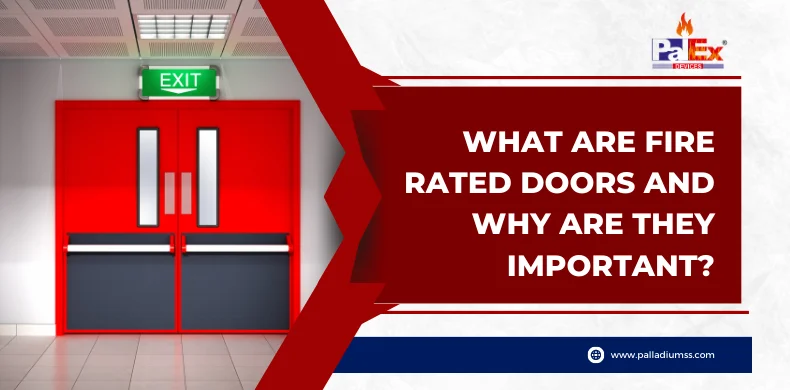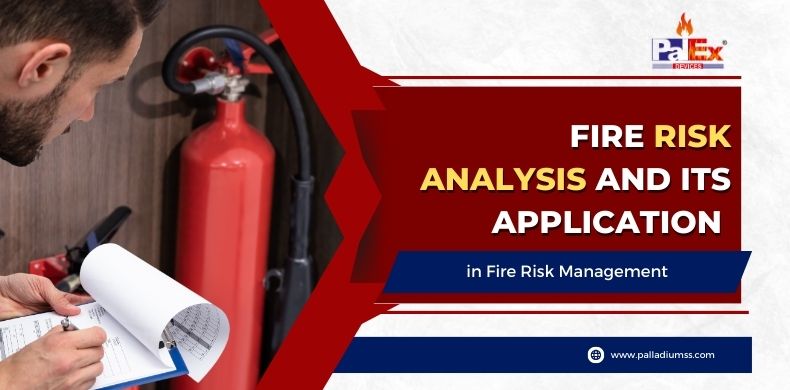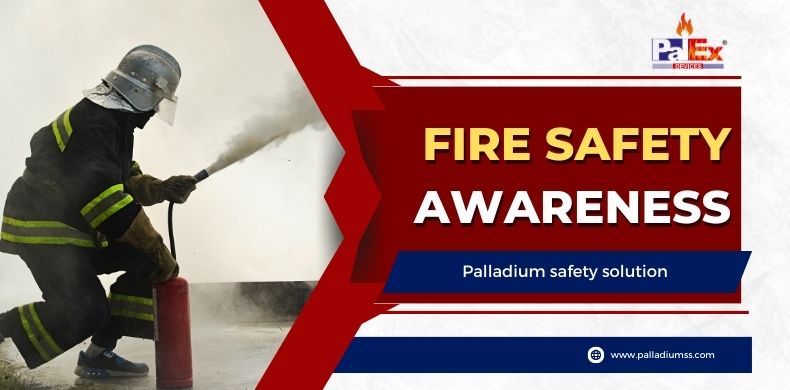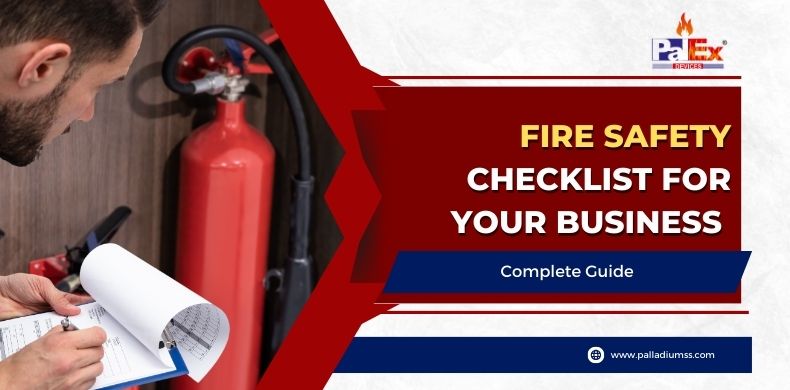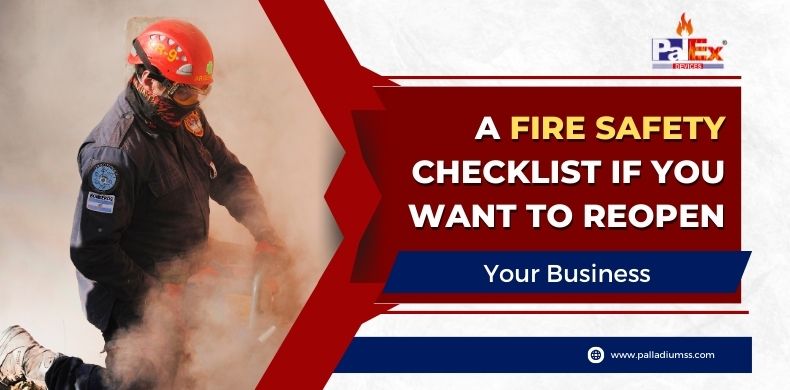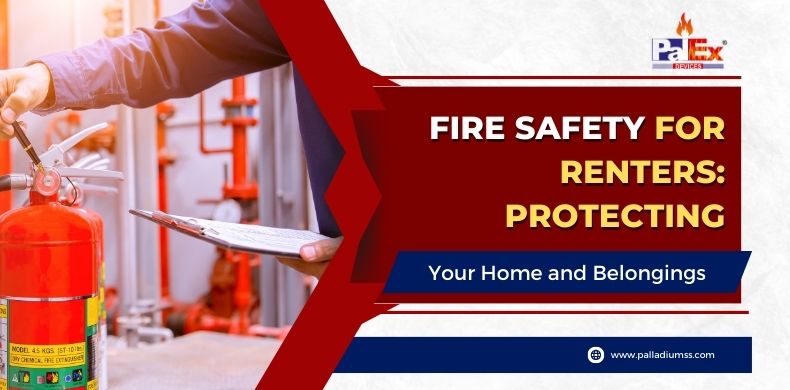Types of Fire-Rated Doors
There are several types of fire-rated doors available for different applications. Some of the common types of fire-rated doors include:- Hollow Metal Doors: These are the most commonly used fire-rated doors, and they are made of steel or other metal materials. They are durable and offer excellent fire protection.
- Wooden Doors: Fire-rated wooden doors are available in various designs and finishes to match the building’s decor. They provide good insulation and can resist fire for up to 60 minutes.
- Glass Doors: Glass doors with fire ratings suit buildings requiring great natural lighting. These things are made from solid glass that can handle scorching temperatures for an hour without breaking.
- Steel Doors with a Glass Panel: The doors have see-through parts made of glass that let sunlight come through and brighten up the area around them. These objects exhibit impressive fire resistance, enduring flames for as long as 90 minutes.
- Sliding Doors: Fire-rated sliding doors are ideal for buildings with restricted space. They come in various materials, including steel, glass, and wood.
- Double Doors: Fire-rated double doors have two that meet in the centre and provide additional fire and smoke protection.
Importance
Here are some key points on why fire-rated doors are essential:- Fire Protection: During an emergency, persons and property are protected by fire-rated doors.
- Building Safety: Fire-rated doors are crucial for security, particularly in high-rise structures and buildings with numerous people.
- Safety Features: Additional safety elements included in fire-rated doors include automatic shutting mechanisms and seals that stop the spread of hazardous gases and smoke.
- Proper Installation and Maintenance: Fire-rated doors must be properly fitted and maintained to ensure their efficacy in the case of a fire.
Also read :Why You Should Install Fire-Rated Doors in Your Buildings
In conclusion, when considering safeguarding measures, one must consider fire-rated doors. Fire suppression systems’ primary objective is to prevent fire propagation and smoke release, thereby protecting people and property in unanticipated contingencies. Property owners and facility managers must ensure appropriate installation and maintenance of their fire-resistant doors in adherence to building codes and regulatory norms to ensure optimal efficacy.
Fire Risk Analysis and Its Application in Fire Risk Management
Introduction
Fire is a manmade disaster that can damage lives and properties within a short duration of time. It has a great threat to mankind. Fire risk analysis is defined as the process of acknowledging the probability of occurrence of fire and consequences or damage if a fire occurs. Its main purpose is to evaluate the level of safety that a particular building requires. Therefore, the analysis is the basic block for fire risk management. Three factors are characterizing in fire risk analysis:- Loss of valuable things like life, property, environment, heritage, etc.
- The scenario that may induce the loss
- Judgment about the probability of the loss
The first and foremost point while acknowledging any building for fire safety is to know about the shape, size, location, construction, and carried out the process in the building. After collecting all the details, fire risk management prescribed a fire safety model to improve the building safety grading to reduce fire risks and damages. It is essential to get an analysis of any building. Fire can take place at ay place at any time. Prevention is better than cure. So we have to be cautious about the fire. Fire risk analysis helps you to adopt precautionary steps to avoid the risk of fire as well as the steps to adopt when a fire breaks out.
- Planning an Emergency Escape Route. While designing any building an emergency exit should always be made in such a way that everyone can easily access it.
- Installing Smoke Detectors helps you to detect the fire. They inform us when the fire in its initial stages that help you to adopt some plans to save the lives of people.
- Installing Water Sprinklers on the most frequent fireplaces help to extinguish the fire in its initial stage. Especially in hospitals, water sprinklers are much beneficial because it is not possible to go to every patient room for a ward boy to save them.
- Installing a Fire Extinguisher on the very floor helps you to control the fire. Educating the employees about how to use extinguishers and educate them about the escape plan is also the job of the company.
Also read :Fight the Fire or Evacuate: Know How to Make the Call
These are some methods that can help you to fight the fire. Installation points of fire fighting equipment must be advisable by a risk analyzer. By adopting the proper guidance you can avoid the fire to some extent. And even fire breaks out their guidance help you to fight with the fire so that you get minimum losses.
Fire Safety and Evacuation Plan
To create a detailed and proper plan, you must show the following things.
- A safe meeting point for staff to meet that should be far away from the building.
- Proper maintenance of emergency doors so that they can be open easily.
- Clearly marked escape routes that provide the quickest and most direct exit from the building.
- There should be a number of emergency-exists according to people gathering strength in the building. So that everyone can easily exit from the building without any panic.
- There would not be any blockage in the exit path.
- If the fire is due to electrical short-circuiting then it is necessary to switch off emergency lights.
- It is crucial to check frequently that all the fire detection and warning system are fully functioning or not.
- Appropriate fire safety equipment is properly installed from the best manufacturers to ensure safety.
- All staff should be trained to deal in such a panic situation. They should know the proper use of fire equipment.
- Installation of fire extinguishers and fire alarm systems can also help to be safe from fire.
- Palladium Zone 4 detection system can help to alert so that a proper plan can be executed.
Also read :Common Electrical Panel Problems and How to Solve Them
Installation of Fire Exit and Fire Doors
A fire-safe building always has a large number of emergency exit to ensure quick and easy escape. The main purpose of all these things is to have the least damage to lives and property in case of fire. Fire-rated glass is being used nowadays as a more stylish and practical approach for a fire safety plan. These fire glasses are used to make compartments in buildings and have the capability to withstand high temperatures. They won’t allow the fire to spread easily. So it ensures a high level of security.Proper fire protection strategies are crucial to minimizing the risk of fire. However, it’s also important to ensure that the correct fire safety and evacuation plans have been put in place to tackle the worst situation of fire.
Fire Safety Awareness
Introduction
A fire has the ability to destroy the lives and property in just minutes. It took birth from small ignorance and may change to wild disaster. So it is quite important to have the awareness that includes what to do, how to do if a fire breaks out. There are some precautions that you can adopt o save the lives of yourself and your belongings.
Continue reading “Fire Safety Awareness”Fire Safety Checklist for Your Business – Complete Guide
Fire Safety is the leading concern for any business owner. You have a lot of responsibility. Not only do you have to worry about your company’s daily operations, but you also have to ensure that your employees and customers are safe. One of the best ways to do this is to create and maintain a fire safety plan.
Many elements go into a fire safety plan, but we’ve compiled a comprehensive checklist to help you get started and explained them in detail:
Review Your Insurance Policy
Your business insurance policy is vital in the event of a fire. It will help you cover the costs of rebuilding and replacing any damaged or destroyed property. Make sure you review your policy regularly to ensure that it is up to date and covers everything you need.
Inspect Your Building Regularly
A fire can start anywhere, so it’s important to regularly inspect your building, both inside and out. Look for any potential fire hazards, such as flammable liquids or electrical wiring, and make sure they are stored or used safely. Also, check to see that all exits are clear and easy to access. Also Read : 8 Fire safety Tips for Office
Inspect Your Electrical Equipment Regularly
Electrical equipment is one of the leading causes of fires in businesses. Regularly inspect all electrical equipment, such as computers, printers, and Copiers, to make sure they are in good working order. If you see any signs of damage, such as frayed wires or singed plugs, replaced the equipment immediately.
Professional Cleanup of Chimney and Vents
If you have a fireplace or use any type of fuel-burning stove, it’s important to have the chimney and vents cleaned regularly. A build-up of soot and debris can be a fire hazard.
Proper Storage of Flammable Liquids
Flammable liquids like gasoline, kerosene and paint thinner must be stored in appropriate containers and away from heat sources. Keep them in a well-ventilated area, and ensure employees know where and how to use them safely.
Keep Your Workplace Clean & Clutter-Free
A key element of fire safety is keeping your workplace clean and free of clutter. This will help to prevent fires from starting in the first place and will also make it easier for people to evacuate if a fire does break out.
Educate Your Employees About Fire Safety Procedures
It’s not enough to just have a fire safety plan in place – you also need to make sure that your employees are familiar with it. Hold regular fire drills and educate them about the importance of fire safety.
Post-Clear Signage Throughout Your Building Indicating
Clear signage is vital in a fire situation. It should be easy for employees and customers to see and understand. Make sure to post signs throughout your building indicating the location of fire exits, fire extinguishers, and first-aid kits.
Perform a Fire Drill Regularly
In the event of a fire, it’s important that everyone in your business knows what to do. That’s why you should perform a fire drill at least once a year. Run through the evacuation procedures with your employees and make sure everyone knows where the exits are.
Have a First Aid Kit On-Hand
In the event of a fire, you may need to provide first aid to your employees or customers. Ensure you have a well-stocked first aid kit and that all your employees know where it is.
Also read :Warehouse Fires – A Nightmare for a Business
Conclusion
While fires in businesses are not very common, they do happen. And when they do, it’s important to be prepared. Having a fire safety equipments in place will help to ensure that everyone in your business knows what to do in the event of a fire. Here are a few tips to help you get started.
5 Essential Fire Safety Equipment for Your Home
Prevention is always better even if in terms of Fire safety. You never know when things turn worse. So it is still advisable to equip yourself well in advance so that one can easily sail through the adversity. Here are five essential fire safety equipment for your home that everyone should be aware of.
Fire Extinguishers
It is important to have one on every floor of your house. But the most important thing is a thorough knowledge of how to use it. Most of the time, people do have fire extinguishers, but the only thing they lack is its proper usage. So, if your house catches fire at an early stage, only then use Palladium fire extinguishers.
Carbon Monoxide Alarms
From using a furnace to lightning a candle, Carbon Monoxide is already kept on producing in every house. However, the amount is negligible. But due to the already production of carbon monoxide in every house, it is advisable to install carbon monoxide alarms because they can help you to know when the level exceeds. Whenever the level of carbon monoxide increases, one feels nauseous, and that’s an indication of higher carbon monoxide levels.
Fire Escape Ladders
Whenever a house catches fire, the most difficult situation is safely evacuation of all the family members even when the main path is blocked. So having a fire escape ladders can help in the safe evacuation of members from a big building apartment. Moreover, these can be folded and thus are easy to store.
Smoke Detectors
These help you to give the first signal that something is not right. Whenever the level of smoke increases, these smoke detectors indicate a red flag. So it is advisable to install them at every level of your house. Most importantly, one is recommended to check it’s working every month and change the batteries every 4-5 months.
Also read :Different Stages of Fire
Fire Blankets
This is one of the most important equipment, but unfortunately, it is considered the least important. Whenever fire happens due to kitchen oils, then having fire blankets can help one to evacuate the building with utmost care. So it is recommended to have as many fire blankets as possible in the house with respect to the number of your family members.
Life is uncertain, but you can certainly ensure your and your family’s safety well in advance!
A Fire Safety Checklist if You Want to Reopen Your Business
All large and small-scale businesses should be aware of fire hazards. Failing to take the needed precautions will make your business vulnerable to destruction. Faulty wiring and electrical equipment can result in a fire accident. However, if you have a proper fire safety system installed, you can protect your business from expensive and dangerous fires.
Having a fire safety system installed will also help you and your employees to work at ease. They will also have a way to save their lives if any such incidents occur. The business owner should make his staff and management aware of the safety plan. The training must be provided and practiced well in advance so that there is no trouble escaping at the time of emergency. Be prepared well in advance.
A fire and life safety program has a detailed guide to prevent a fire and emergency medical assistance.
What’s Included?
- First aid kits
- CPR
- Evacuation plans
- Ensuring calmness of the employees during an emergency.
- Promoting their capability of helping others.
- A successful outcome
- Less property damage
- Fewer injuries and no life loss.
Reduced Risk of Injury
Fire can cause severe and heavy damage. Your business and the lives of your staff also get at risk. If your building is in a wild area that can cause a forest fire, you need to be extra cautious and vigilant. If there is no fire safety plan during the incident, the aftermath can be disastrous. It is always better to have a detailed fire safety plan in hand and reduce the risk of injury and damage. Inspect the area and prepare a list of the area most vulnerable to catching fire. You can take the help of fire testing agencies, and they will come up with a fire safety plan accordingly. This will also determine what you might need for adequate safety.Elements of a Fire Safety Plan
- Act judiciously while appointing a fire safety leader as they will have considerable baggage of responsibility on them.
- Guide everyone with the proper instructions on how to handle an emergency.
- Once the plan is finalized, rehearse it multiple times for perfection.
- Proper training should be imparted to the employees for efficient outcomes.
Promote Awareness
Prepare a good plan and make your employees aware of the necessary guidelines. You can write all of the instructions and post them in your workplace, or you can hold a live demonstration of how to use a fire extinguisher. Going through the same set of education every day will make them familiar with the steps to be taken at the time of emergency. This will help in preventing any fatalities.Also read :How to Make a Home Fire Escape Plan
Conclusion
Fire accidents can prove to be very miserable for a business. A good fire safety plan will not minimize the damage effectively. Every business should know the vulnerable areas of their work to reduce the risks associated with the incident. Proper training to the employees makes them proactive in preventing a fire.Fire Safety For Kids: Teaching Your Children How to Stay Safe
- Start With the Basics: Educate kids on fire, its composition, and its mechanisms of operation. Elaborate that fire can rapidly propagate and harm individuals and assets. Instruct them on distinguishing between fire and other heat sources, including stoves, ovens, candles, and lamps.
- Demonstrate Fire Safety Equipment: It would be beneficial to illustrate to youngsters the various kinds of fire safety instruments, including smoke detectors, fire alarm panels, firefighting devices, and fireproof covers. Educate them on the appropriate usage and application of said tools. It is essential to identify the location of smoke detectors in your residence and conduct routine functionality checks.
- Role-Play Fire Scenarios: Practice what to do in a fire emergency with your children. Walk them through what to do if they hear the smoke alarm and how to evacuate safely. Practice escaping from each room of the house, and identify at least two exit routes for each room.
- Discuss Fire Hazards: Talk to your children about fire hazards in the home, such as overloaded electrical outlets, leaving the stove on, and leaving flammable materials near heat sources. Encourage them to notify you if they notice anything dangerous.
- Teach kids to Stop, Drop, and Roll: Explain that they should stop if their clothing catches fire. Drop to the ground. Roll back and forth until the flames are out.
- Revisit and Practice Regularly: Talking and implementing fire safety measures with children is essential. It is important to periodically examine fire safety procedures monthly and communicate any modifications or revisions to the fire safety plan as necessary.
- Stress the Importance of Staying Low: In a fire emergency, teach kids to stay low to the ground and crawl to escape. This can help reduce their exposure to smoke and heat.
- Discuss Smoke Alarms: Teach kids about smoke alarms and how they work. Ensure to demonstrate how to test and replace batteries in smoke alarms and remind them to notify you if the smoke alarm ever goes off.
Conclusion
Educating children on fire safety is essential to ensure safety and minimize incidents. Teaching children fundamental fire safety practices and routines in their early years will equip them to respond promptly and confidently during a fire-related crisis. Remember to review fire safety rules with your children regularly, ensure they understand the importance of fire safety and practice fire drills to prepare them for emergencies. With some knowledge about fire fighting equipments and preparation, you can help your children stay safe from the fire threat and protect your home and family.Fire Safety for Renters: Protecting Your Home and Belongings
- Install Smoke Detectors: Make sure your rental unit has working smoke detectors installed on every level of the home, including inside each bedroom and outside each sleeping area. Test them regularly and replace the batteries as needed.
- Have an Escape Plan: Develop a fire evacuation strategy with your household or flatmates and regularly conduct drills. Ensure that all individuals know the most practical and secure route to exit the premises in the scenario of a fire.
- Keep Fire Extinguishers Handy: Acquire a compact device for your leased space and ensure that all individuals are proficient in its handling. It is recommended to store it somewhere convenient to reach, such as beneath the kitchen sink.
- Don’t Overload Outlets: Avoid plugging too many appliances into one outlet, and don’t use extension cords as permanent wiring solutions. This can cause electrical fires.
- Be Careful With Candles: If you enjoy burning candles, make sure they are placed in a sturdy holder and kept away from flammable objects. Never leave a burning candle unattended.
- Don’t Smoke Indoors: Smoking indoors can cause fires, so smoke outside and dispose of cigarette butts properly.
- Keep a Clean and Tidy Home: Clutter can increase the fire risk, so keep your rental unit clean and tidy. Don’t block exits or vents with furniture or other items.
- Know Your Landlord’s Responsibilities: You must keep the smoke detectors in good condition and guarantee that the rented property adheres to fire safety regulations. If you have any worries, kindly communicate with your landlord or property manager.
Also read :6 Reasons Why Fires in High-Rise Buildings Become Deadly
Conclusion
In conclusion, fire safety is an essential consideration for renters. To ensure their safety and protect their homes from fires, tenants can adopt easy-to-follow guidelines such as inspecting smoke detectors, refraining from overburdening electrical sockets, keeping flammable materials away from heat-emitting sources, devising a safety escape strategy, and notifying property owners of possible hazards. By being proactive and adopting preventive steps, you can significantly contribute to safeguarding yourself, your dear ones, and your possessions. It’s important to remember that fire safety is a collective duty, and each individual should contribute towards reducing the likelihood of fires and protecting themselves during a crisis.Fire Safety for Retail Store
Electrical Fires Reasons
Electricity fires are one of the top causes of business fires and one of the most accessible avoidable fire risks. The problems and main threats to the retail industry include unwired wiring, faulty plugs, electric sockets, and overloaded power plugins. The number of computers, extension cables, and too many appliances connected to the same source increase overload and overheating sockets. A fire can ignite quickly if an overheated socket or plug finds paper.How You Can Prevent From Electrical Fires
Exercise the protection of electric fire hazards in retail businesses by requiring a Duty Manager of each department to inspect electric outlets, sockets, and connectors daily. Clean up the dust and waste, and check for defective wiring or overload on your devices and appliances. Water CO2 is effective for fire suppression because the fire removes the source of oxygen from it and reduces the heat of the fire.Gas Lines Fire Reasons
Most major retail businesses face severe fire risks with gas lines, liquid gas, propane, and, in certain circumstances, tools and outdoor devices, as well as gas lines and propane running their heating and cooling sources, overhead motors, forklifts, and vehicles. These and other flammable fluids may ignite instantly if a spark or a flame is in touch with them. They can pose substantial retail risks if they are in your stores.How You Can Prevent Gas Lines Fire
Implement and teach personnel a complete safety flammable program. Regular gas lines are inspected and maintained. When there is a chemical leak, the area must be blocked, cleaned up, and disposed of according to the code immediately. Fire sprinkler systems are vital to preserving the customers’ safety and preventing significant damages to the inventory fire sprinkler systems are essential. When a sprinkler system is activated by heat from a fire, water is released onto the fire to prevent the fire from spreading. Keeping away from these sources all paper, cartons, waste, and smokes. We require annual training on fire safety and combustible liquids.Trash & Cigarettes Lgnition Risks
Retail stores have vast quantities of garbage — all flammable. Packing materials can develop and risk ignition: cardboard, plastic, paper, peanuts, and other packaging materials. The breakroom, warehouse, and storage spaces provide a large volume of rubbish. If the waste is not disposed of regularly and appropriately, a possible fire fuel can be created if it comes into contact with a spark or heat source. The outcome might be a quick, out-of-control fire in a matter of seconds, with a tossed cigarette near the waste.Also read :8 Important Fire Safety Tips That You Should Know

